I am using CTE to convert xml to csv so that it can be exported to a file, however if I have an empty xml tag, this currently gets ignored. Here is my initial solution courtesy of this previous very helpful post: https://stackoverflow.com/a/23785202/6260721
Here is my sql:
CREATE TABLE EXPORT_TEST
(
DATA varchar(max)
)
INSERT INTO EXPORT_TEST (DATA)
VALUES ('<EXPORT_DATA><ID>ABC123</ID><PRICE_A>5.6</PRICE_A><PRICE_B></PRICE_B><PRICE_C>8.1</PRICE_C></EXPORT_DATA>')
DECLARE @commaSeparatedValues NVARCHAR(MAX)
DECLARE @xml XML = (SELECT TOP 1 CONVERT(xml,DATA) FROM EXPORT_TEST)
;WITH cte AS (
SELECT
rownr = ROW_NUMBER() OVER (ORDER BY @commaSeparatedValues),
Tbl.col.query('.') AS [xml]
FROM @xml.nodes('EXPORT_DATA') Tbl(col)
), cols AS (
SELECT
rownr,
Tbl.Col.value('.', 'nvarchar(max)') AS Value
FROM cte
CROSS APPLY cte.xml.nodes('//text()') Tbl(Col)
)
INSERT INTO EXPORT_TEST(DATA)
SELECT DISTINCT
STUFF((
SELECT ',' + IIF(ISNUMERIC(value) = 1, Value, '''' + Value + '''')
FROM cols SSF WHERE SSF.rownr = S.rownr
FOR XML PATH(''),TYPE
).value('.','VARCHAR(MAX)'
), 1, 1, '') as DATA
FROM cols S
SELECT * FROM EXPORT_TEST
At the moment, it is returning:
'ABC123',5.6,8.1
But I don't want it to ignore PRICE_B, I want it to return an empty string:
'ABC123',5.6,,8.1 <--extra comma required where PRICE_B should be
How can I achieve this?
